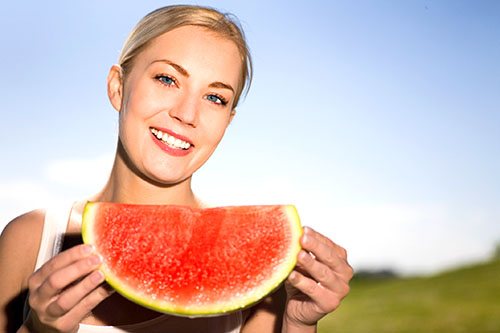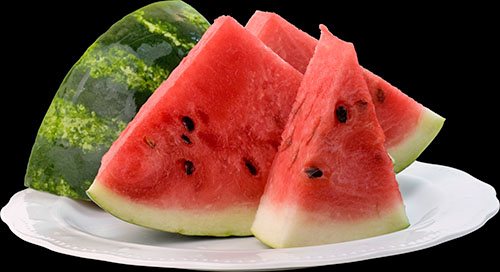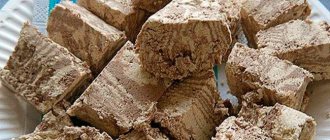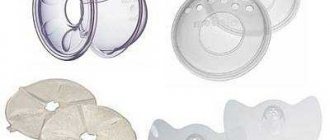About the benefits of watermelon
Watermelon is 90% water. And as you know, during breastfeeding it is necessary to constantly monitor your water balance. In addition, its benefits lie in the following factors:
- this berry has diuretic and anti-inflammatory effects, which will benefit the mother of the newborn (swelling will disappear, urination will become more frequent, and excess fluid will be eliminated);
- the fetus replenishes the reserves of magnesium and calcium in the body of the nursing mother;
- the abundance of panthenolic acid in the product, which normalizes the sleep of mother and child;
- this delicacy is rich in vitamin C, which can boost immunity and protect the body from possible colds;
- Riboflavin, ascorbic acid, and antioxidants contained in watermelon prolong a woman’s youth and prevent the development of tumor cells;
- The iron contained in watermelon will solve the problem of anemia during breastfeeding.
As mentioned earlier, watermelon contains folic acid. This useful substance allows you to form and maintain healthy new cells. During the period of active growth of the baby, this property is extremely useful. And folic acid will give a nursing mother youth and healthy skin color.
Can a nursing mother eat melon?
In appearance, watermelon is a completely safe product, but only when purchased during the season (early autumn). The fact is that the absorbent property of this berry allows it to absorb all the nitrates with which the melon is processed for the speedy ripening of the fruit. Therefore, watermelon purchased out of season (summer, winter, spring, late autumn) can cause digestive problems and colic in the mother and child during breastfeeding.
How to choose the right fruit
Before purchasing a product, you should visually check its ripeness. There should be no dents, cuts or cracks on the surface of the watermelon. You should avoid retail outlets near the road or with goods piled in heaps on the ground. In addition, when purchasing a product, you need to pay attention to its dimensions. It is better to give preference to medium-sized watermelons (about 5 kg). Large fruits, as a rule, are oversaturated with nitrates and pose a danger to mother and baby. Small berries most likely were not ripe and were picked ahead of time.
Also, any buyer has the right to request certificates from the seller confirming the quality of the products.
You can distinguish a ripe watermelon by the following characteristics:
- bright color of the crust with dark stripes;
- yellow-orange spot on side;
- moderately dry tail (if it is completely dry, this indicates that the watermelon has been stored in the warehouse for a long time);
- thin white veins and uneven color of the pulp.
Every nursing mother can easily test berries for nitrates at home. You just need to follow these steps:
- Cut a small piece of watermelon with the rind.
- Pour a glass of clean water.
- Place part of the fruit in a container and stir the water.
- If the liquid has become cloudy and opaque, then the amount of nitrates in it exceeds the norm.
Nitrate-free fruit will not affect water clarity.
How to choose?
The basic rule that a mother who wants watermelon while breastfeeding should understand is to buy the berry only from late August to mid-September. During this period, melons ripen under the hot southern sun on their own; they no longer contain nitrates or other chemical nasties. If you eat the first watermelons in June, then there is a risk of transferring harmful substances to the child during breastfeeding, which are used to prick the fruit for rapid ripening.
When choosing, you should be guided by the following tips:
- Most of all, Astrakhan watermelons are on the market, and it’s worth choosing them. Astrakhan has an ideal climate for growing melons and products from there are 100% safe for mother and baby.
- You need to purchase fruits from trusted stores or greengrocers; if in doubt, ask for a quality certificate. Watermelons lying in heaps, especially along the roads, are taboo!
- Look at the appearance of the watermelon; there should be no cracks or dents on it. Through holes in the peel, pathogenic bacteria will enter the pulp, which the body of the mother and child may not be able to cope with. The infection is dangerous during lactation, so nursing mothers should not eat cracked watermelons.
- Unripe watermelon is a direct path to indigestion for both mother and baby after feeding. The ripe fruit has a small dried tail, and on its side there is a yellow spot from lying on the ground. The color should be bright, the stripes should be contrasting.
- If you suspect that the watermelon has been spiked with nitrates, you can check this in a simple way. You need to place a piece of pulp in a glass of water and stir with a spoon. A “chemical” watermelon will cause the water to become cloudy, but the transparency of the liquid will not change from a real one or a self-ripened one.
- Despite the desire to grab the largest watermelon, it is better to choose a medium watermelon weighing 5-6 kg. This is the normal size for a fetus that has grown naturally.
- Watermelons that are too small have not ripened and have not had time to collect all the nutrients necessary for a nursing mother; there will be no benefit from them, and the baby is completely allergic.
- Those who like to gnaw watermelons right down to the rind will have to give up this habit, as harmful chemicals are concentrated there.
Watch a video about choosing a watermelon:
About allergies
Red foods are prohibited in the first months of GW. And watermelon, as you know, has a bright red or orange color. Such pulp can cause an allergic reaction in a newborn.
Therefore, eating watermelon while breastfeeding in the first month of a child’s life is contraindicated.
Allergies in a newborn are characterized by a sharp change in the baby’s condition, expressed in redness and rashes on the skin. In rare cases, the baby may experience stool upset. Or the allergen will gradually accumulate in the baby’s body and only after some time will give a negative reaction.
If any family member has asthma, then the introduction of watermelon into the diet should be postponed until 3-4 months after birth. At this time, the baby’s digestive system is already better adapting to the foods consumed by the mother. But even then, the berry should be tried gradually and in small portions in order to monitor the child’s reaction to the innovation.
How to choose the right watermelon?

Doctors say that in the first 2 months after childbirth you should not eat watermelons, and in the future you need to be careful with them. There is a possibility of poisoning and allergic reactions. This is especially dangerous for children in their first year of life. To prevent this from happening, you need to carefully choose the product, and it is recommended to buy it at the end of August. A young mother needs a ripe watermelon, so it is necessary to check it thoroughly.
On this topic:
Features of using azofoska for feeding strawberries
May 16, 2017
Easy growing of watermelons in open ground at the dacha
May 7, 2017
BACK FORWARD 1 of 46
When purchasing watermelon (only during mass ripening), you need to pay attention to the following nuances:
On this topic:
Beneficial properties and contraindications for the use of goji berries
Affordable exotic for your gardens - goji berry
Poisonous berries of Russia
What medicinal properties do small fruits have...
BACK FORWARD 1 of 24
- The tail of the watermelon should be dry;
- there should be a yellow-white or yellow spot on the side, which shows that it has ripened on the ground;
- when squeezing a watermelon, a small characteristic crack should be produced, which also indicates its ripeness.

These parameters indicate the ripeness of the watermelon. However, this does not guarantee the quality of the purchase. Therefore, it is recommended to test the purchased watermelon for nitrate content. To check, place a small piece of pulp in a transparent container with water and observe its color. If the water becomes cloudy, turns pink, or turns into a liquid that resembles milk, then the watermelon should be discarded.
It is not recommended to purchase watermelon that is sold near highways, cracked or cut into halves and quarters in stores. The same goes for soft watermelons that don't look fit to eat.
About digestive problems
The result of excessive consumption of sweet berries during breastfeeding can be a disorder of the digestive system (flatulence, heaviness in the abdomen, etc.). To avoid this problem, you need to eat watermelon in small portions and only after the main meal.
If digestive problems arise in a nursing mother, then they are most likely to appear in the baby. Lack of a sense of proportion in consuming watermelon can cause colic in the baby.
In addition to stool upset and abdominal pain, the wrong product can cause poisoning in mother and child. Such consequences are the result of a large amount of nitrates in the pulp of the fruit. And if a nursing mother is able to soon forget about such an unpleasant problem, then for an infant such a meal may result in hospital treatment.
When should you not eat watermelon?
After we talked about whether watermelon can be consumed while breastfeeding, we should touch on the topic of contraindications. You should completely avoid this berry:
- in the first month after the birth of the baby;
- women suffering from diabetes;
- for pathologies of the excretory system (kidney stones, etc.);
- in case of pancreatic diseases.
Whether it is possible to eat watermelon while breastfeeding in these cases, only a doctor will decide.
When should you add it to your diet?
During lactation, watermelon pulp can be introduced into the diet for the first time no earlier than the baby turns 4 months old. Before this period, the baby’s body is developing, and any low-quality product is harmful to its health. After this age, they begin to try small pieces, and carefully monitor the condition of the baby.
So, can you have watermelon while breastfeeding or not? Experts say that this berry is simply necessary. Indeed, during lactation, the consumption of useful components, vitamins and minerals in the female body increases. Stocks of such substances need to be replenished. Watermelon contains a large amount of microelements and vitamins.
As practice shows, all mothers can drink watermelon while breastfeeding. The main thing is to introduce it correctly into the diet. It is not recommended to start eating melons earlier than three months after the appearance of breast milk. In the first 60 days, the young mother must adhere to a strict diet. This will allow the child to get used to the new diet and learn to perceive the nutritional components received with milk. Starting from 4 months, a woman can diversify her menu.
A new product should be introduced gradually. At the same time, portions should be small. After 5 days, the amount of product can be increased. In this case, it is necessary to carefully monitor the child’s condition. If his stomach hurts or a rash appears, then he should refuse watermelons.
First of all, you should not eat watermelon while breastfeeding in the first month of lactation. This is very dangerous for a newborn baby. In addition, there are a number of diseases for which the consumption of such food is not allowed. First of all, women suffering from diabetes should avoid watermelons. In principle, such food is prohibited for them.
Also, those who have problems with the excretory system should avoid melons. It could be kidney stones. Watermelons can also aggravate your health if you have pancreatic diseases. Before introducing this product into your diet, you should consult your doctor.










